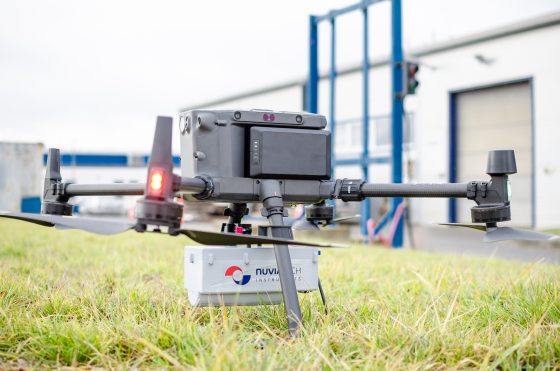Radiation detection has traditionally relied on ground-based instruments and manual inspections. However, with advancements in drone technology and the growing need for efficient and remote monitoring, drone-based radiation detection has emerged as a groundbreaking innovation. Combining unmanned aerial vehicles (UAVs) with radiation sensors, this approach provides faster, safer, and more comprehensive assessments of radioactive threats and environments. Whether used in disaster response, environmental monitoring, or nuclear facility inspections, drone radiation detection is transforming the way we manage radiological safety.
What is Drone Radiation Detection?
Drone radiation detection involves mounting specialized radiation sensors onto UAVs to measure ionizing radiation from the air. These drones can detect alpha, beta, gamma, and neutron radiation, depending on the sensors used. The system collects real-time data and transmits it to operators on the ground, offering detailed insights into radiation levels across large or inaccessible areas.
Key Components of Drone Radiation Detection Systems
Radiation Sensors
The heart of the system, sensors such as Geiger-Müller tubes, scintillation detectors, or semiconductor-based detectors are used to identify and quantify radiation types and levels.
UAV Platform
Drones vary from small quadcopters for short-range surveillance to large fixed-wing UAVs for extended missions. They are chosen based on payload capacity, battery life, and flight stability.

Data Acquisition and Transmission Systems
Advanced drone radiation systems include GPS integration, real-time telemetry, and data logging to map radiation distributions accurately.
Mapping Software
Radiation data is processed and visualized using geographic information system (GIS) tools, allowing operators to view radiation hot spots overlaid on detailed maps.
Applications of Drone-Based Radiation Detection
Drone radiation detection is finding increasing use across diverse sectors:
Nuclear Facility Monitoring
Drones are ideal for routine inspections of nuclear plants, especially in hard-to-reach or hazardous areas like reactor roofs, cooling towers, or waste storage sites.
Disaster Response and Recovery
After nuclear accidents or radiological emergencies (e.g., Fukushima or Chernobyl), drones can quickly survey affected zones, map radiation spread, and guide emergency responses without risking human exposure.
Environmental and Wildlife Research
Drones help monitor radiation in forests, rivers, or remote ecosystems where ground access is difficult. This is especially useful in studying the long-term ecological impacts of radiation.
Border Security and Counterterrorism
Law enforcement agencies use drones to detect illicit radioactive materials or dirty bombs, particularly in areas where human patrols are limited or dangerous.
Mining and Industrial Safety
In industries like uranium mining or radiopharmaceutical production, drones help assess contamination levels and verify the integrity of safety zones.
Advantages of Drone Radiation Detection
- Enhanced Safety: Drones eliminate the need for personnel to enter hazardous areas, significantly reducing health risks.
- Rapid Deployment: They can be quickly launched to survey large or inaccessible areas in a fraction of the time traditional methods require.
- High-Resolution Data: Drones fly close to the ground, collecting precise radiation readings and creating detailed contamination maps.
- Cost Efficiency: Reducing the need for expensive protective equipment and labor-intensive surveys leads to long-term cost savings.
- Flexibility: Drones can be equipped with various sensors and reconfigured for different mission types with minimal effort.
Challenges and Future Outlook
While drone radiation detection offers immense potential, it comes with challenges. Limited flight times due to battery constraints, payload limitations, and weather sensitivity can affect performance. Additionally, regulatory hurdles and airspace restrictions must be carefully navigated, especially near sensitive sites.
Looking ahead, the integration of AI and machine learning will likely enhance drones’ ability to autonomously detect anomalies, optimize flight paths, and interpret complex radiation data. As drone technology continues to evolve, their role in radiation detection and safety monitoring will become even more central.
Conclusion
Drone radiation detection represents a powerful convergence of aerial robotics and nuclear safety technology. By enabling remote, real-time, and precise radiation monitoring, these systems are redefining standards in emergency response, environmental protection, and industrial safety. As the demand for faster, safer, and smarter radiation detection grows, drones will undoubtedly remain at the forefront of innovation, keeping both people and the planet safer from invisible threats.






Comments